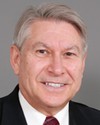Mr. West, we are talking about a multi-million-dollar investment. Mr. Waddington told us that millions more would have to be invested by your company and by taxpayers in order to make the reactor work. At some point in time, you have to give up. It was a bad deal. Some of the people you were dealing with were perhaps less than honest, but the fact remains that it was a bad deal from the outset.
Mr. Waddington, you are an expert in these matters. You have studied the experience and the review of the independent experts. There was already agreement in 2003 on the explanation that you gave us, which was that it was doomed to failure.
If you had been in the same position as MDS Nordion, would you have signed a contract to continue on with the project in 2006? If I had been in their shoes, I would not have trusted Atomic Energy Canada, under the circumstances. The realizations of 2003 were very serious.
I cannot understand how it came to this. Quite frankly, as a member of Parliament, as a taxpayer and as a citizen, I cannot understand how a company, a government and experts managed to find themselves in this dead-end today, where everyone seems surprised. I cannot conceive of such a thing.
Would you have signed a contract and invested some $300 million more to continue on with the MAPLE reactor study, in the full knowledge that there was little chance of finding a solution?






